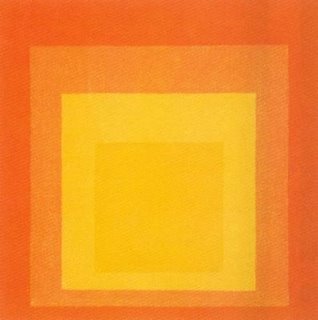Image Essay #15

The image above is a study by Josef Albers entitled “Homage to the Square,” which is actually part of a series. This particular image is very monochromatic – it has varying shades of orange. The repeated square shape helps reinforce this. It is said that the square is the “ideal” shape for his study because squares are related to each other in size (proportionally). The artist also pointed out that squares do not occur in nature, therefore it is man-made. I do not think that the image would be nearly as effective if the shape were circular or even a rectangle. The square is what makes this piece memorable.
Albers is credited for influencing geometric abstraction and minimalism. He was very interested in the psychological effects of color/space. It was his goal to question perception and its effects. The image forms kind of an optical illusion because the colors are changing and seem to be moving. They somehow support and oppose one another at the same time. Much like Kandinsky mentioned in a previous entry, Albers influenced abstraction heavily. While the shapes are simple, his studies were very extensive and it is reflected in the complexity of the image.






